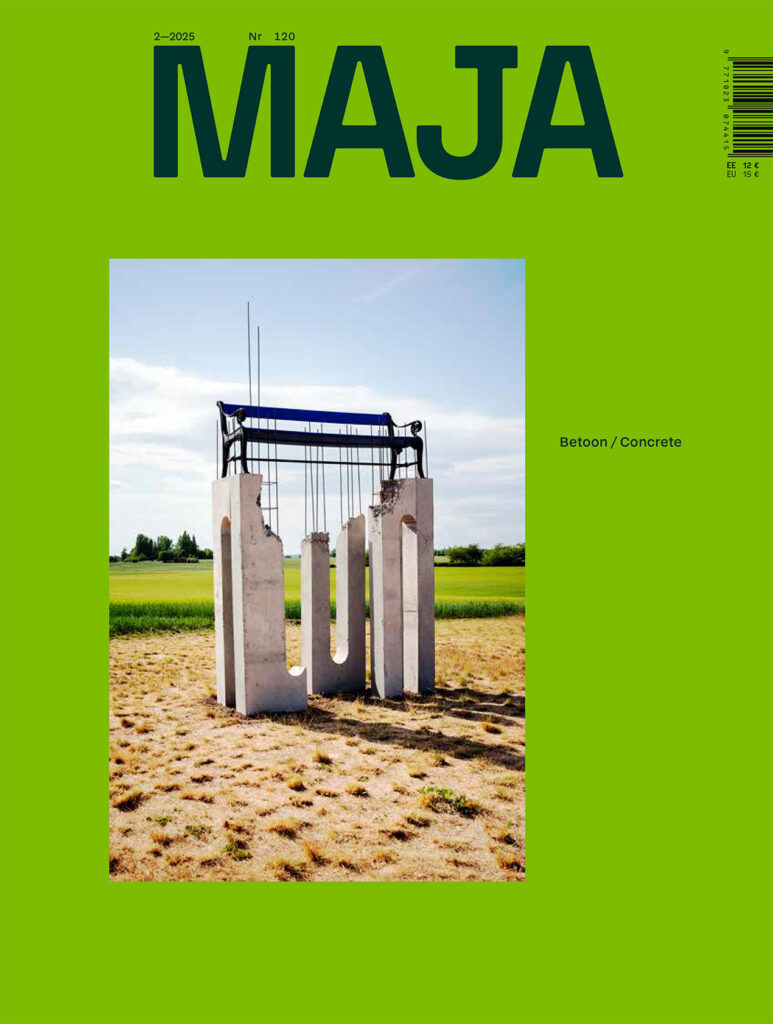OUTSET
Nature vs Infrastructure. Functions in space or functional space
Siim Tuksam
PROJECT
Software is Infrastructure for Architects. Elektrilevi Training Centre
Kiili, EST
EKA PAKK, Nomad, What If
Annika Valkna
IN PRACTICE
Crystal Computing (Google Inc., St. Ghislain)
Ivar Veermäe
INTERVIEW
Antoine Picon. Design potential in infrastructure
Sille Pihlak
ESSAY
Landscape Infrastructure
Andres Levald
ESSAY
Infrastructure-the Circulatory System of the Superorganism
Hannes Aava
IN PRACTICE
Power Coalition
Maxime Cunin
PHOTO ESSAY
Room No. 13
Reinis Hofmanis
RESEARCH
Narrowing Streets = Urban Densification
Helin Kuldkepp
IN PRACTICE
Sea Tram
Villem Tomiste
ESSAY
Why Study Rail Baltic?
Mattias Malk
IN PRACTICE
Baltic Lines. Spinning off and spinning around Rail Baltica
Diāna Mikāne, Paula Veidenbauma
INTERVIEW
Infrastructure of Care
Liza Goncharenko
INFRASTRUCTURE
These days, to be is to be connected. Electricity, heat, road and street networks, internet connections, and water supply—it is as if all these intersecting and sometimes overlapping networks have become basic human rights. If these networks function well, our dependence on them goes unnoticed—we rarely take a moment to acknowledge the energy that travels across the sky, through underground and underwater pipelines, through wall cables, into millions of devices. On the other hand, when something disrupts the functioning of these networks, be it military aggression by a tyrannical neighbour, a sharp rise in prices, or catastrophic weather events, the political, economic, ethical, and often also spatial dimensions of these structures suddenly become apparent.
‘Humankind is transforming the planet into a vast infrastructural project serving its economic system’, says Hannes Aava. The technical infrastructure of modern societies generally operates at the expense of biodiversity, using land, air, and water as a substrate whose pollution seems reversible and temporary. Does our current base structure even allow us to move from exploitation to collaboration?
The present issue on infrastructure brings together various views on the role of architects in this order of things. Siim Tuksam calls for the use of computational models that can help in getting rid of unviable distinctions between what is created and what is made, between nature and infrastructure. Andres Levald, on the other hand, finds that regardless of growing technical capacities there is a lack of knowledge, skill, and will in structuring the landscape space. In discussing Rail Baltica, Mattias Malk emphasises that all new technical infrastructure should double as social infrastructure. His view that ‘[r]ather than being an invisible underlay to other action, infrastructure is crucial in determining the future ways of living together’ is shared by residents of a neighbourhood in Amsterdam who are striving for community-based energy production.
Design can make infrastructure more visible and draw attention to its interconnectedness with the surroundings, culture, and environment, says Antoine Picon. Infrastructure reveals both the affiliations and power relations in living together—and perhaps also some opportunities for the future.
Laura Linsi, Editor-in-chief
Madli Kaljuste, Editor
October, 2024





